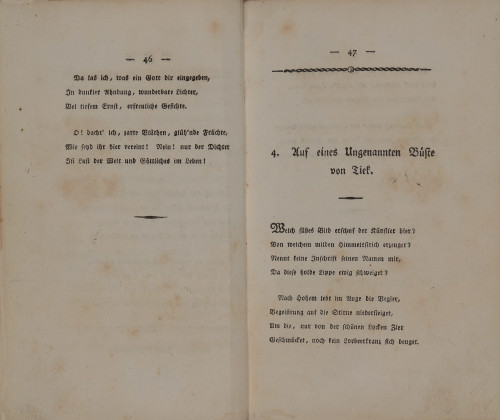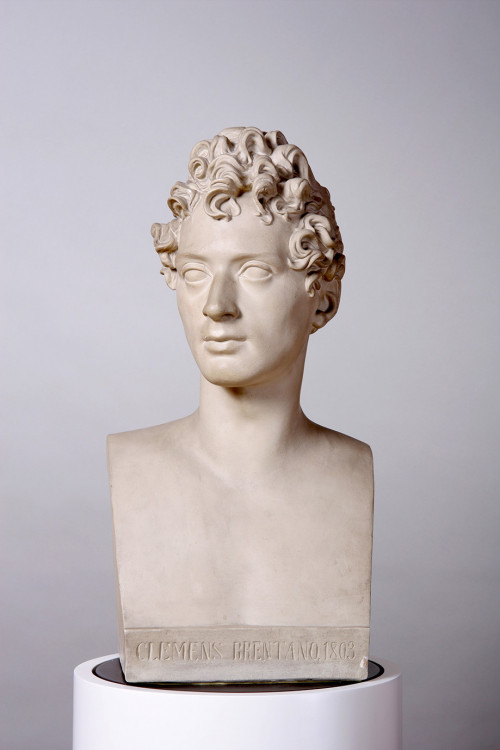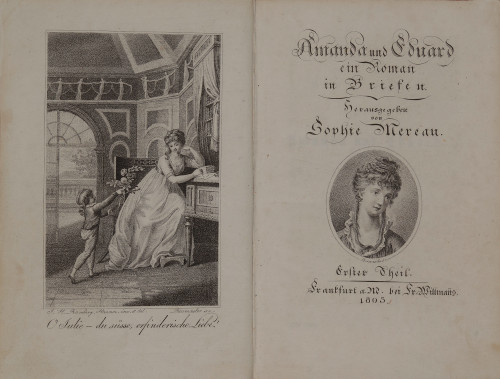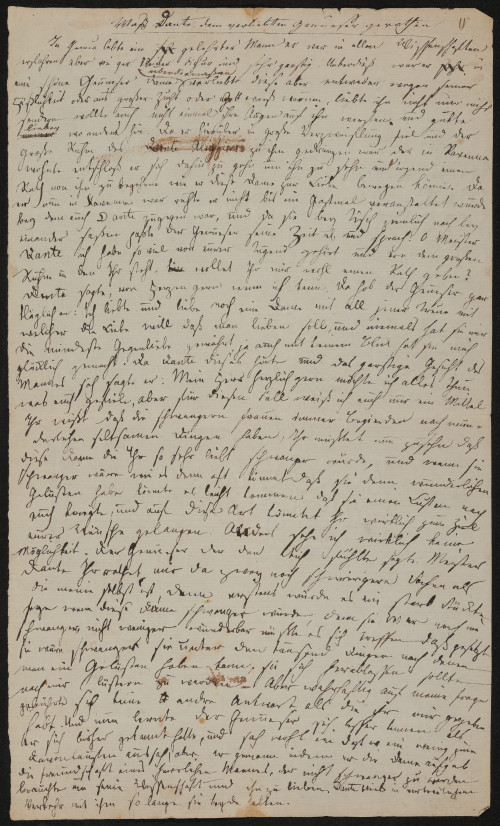The plaster bust in this installation is a portrait of Clemens Brentano. The young author had it made for his sister Bettine. His wife, the writer Sophie Mereau-Brentano, received a copy.
Sophie Mereau was born Sophie Schubart in Altenburg, Thuringia in 1770. Friedrich Schiller began to nurture her talent for writing in 1791. In 1793, she married the jurist Karl Mereau and moved to Jena. The couple had two children and hosted many social gatherings in their home, which many of the Romantics frequented. After their divorce in 1801, Sophie earned her livelihood with her writing, and is today considered one of the early professional women writers. She made a name for herself with works like the novel Amanda und Eduard.
When the twenty-year-old Clemens Brentano met the author eight years his senior in 1798, he quickly succumbed to her legendary beauty. The two separated in the summer of 1800 after a quarrel, but three years later they met again — with far-reaching consequences. In long letters from Marburg, Brentano now painted a picture of their future together. Sophie, however, who had come to value her independence, only accepted his marriage proposal after conceiving his child. The two were married in Marburg on 29 November 1803.
Sophie had received the bust of Clemens in September of that year, in a phase when he himself was not with her. He wrote to her: “How ugly you will find me when you see me again, having grown accustomed to Clemens in plaster.” The sculpture inspired Mereau-Brentano’s Sonnet to the Bust of an Unknown Man. There it says that a renowned future poet could be recognized in the facial features — a clear challenge to her lover.
The writer couple also worked together. For example, they collaborated on translating novellas from other languages into German. A volume of Spanish novellas was published, but none of their other translations came out in print. Sophie Mereau-Brentano died in Heidelberg on 31 October 1806 while giving birth to their third child.
Poems devoted to paintings and sculptures were very popular in Romanticism because they were a way of transcending genre boundaries. In 1805 Mereau-Brentano’s sonnet appeared in her series of writings Bunte Reihe kleiner Schriften, poetically introducing the bust to the public. Owing to the refined arrangement of the rhyming words, sonnets were considered especially musical. And it is from that quality that they take their name: “sonnet” comes from the Latin “sonus” and means “little song”.
Objects
-

SOPHIE MEREAU-BRENTANO
Auf eines Ungenannten Büste von Tiek
In: Bunte Reihe kleiner Schriften von Sophie Brentano. Frankfurt a. M.: Wilmans 1805, S. 47–48.
-

CHRISTIAN FRIEDRICH TIECK
Porträtbüste Clemens Brentano, 1803
-

SOPHIE MEREAU-BRENTANO
Amanda und Eduard, ein Roman in Briefen. Herausgegeben von Sophie Mereau
2 Bände. Frankfurt a. M.: Wilmans 1803.
-

SOPHIE MEREAU-BRENTANO
Was Dante dem verliebten Genueser gerathen, ab 1803